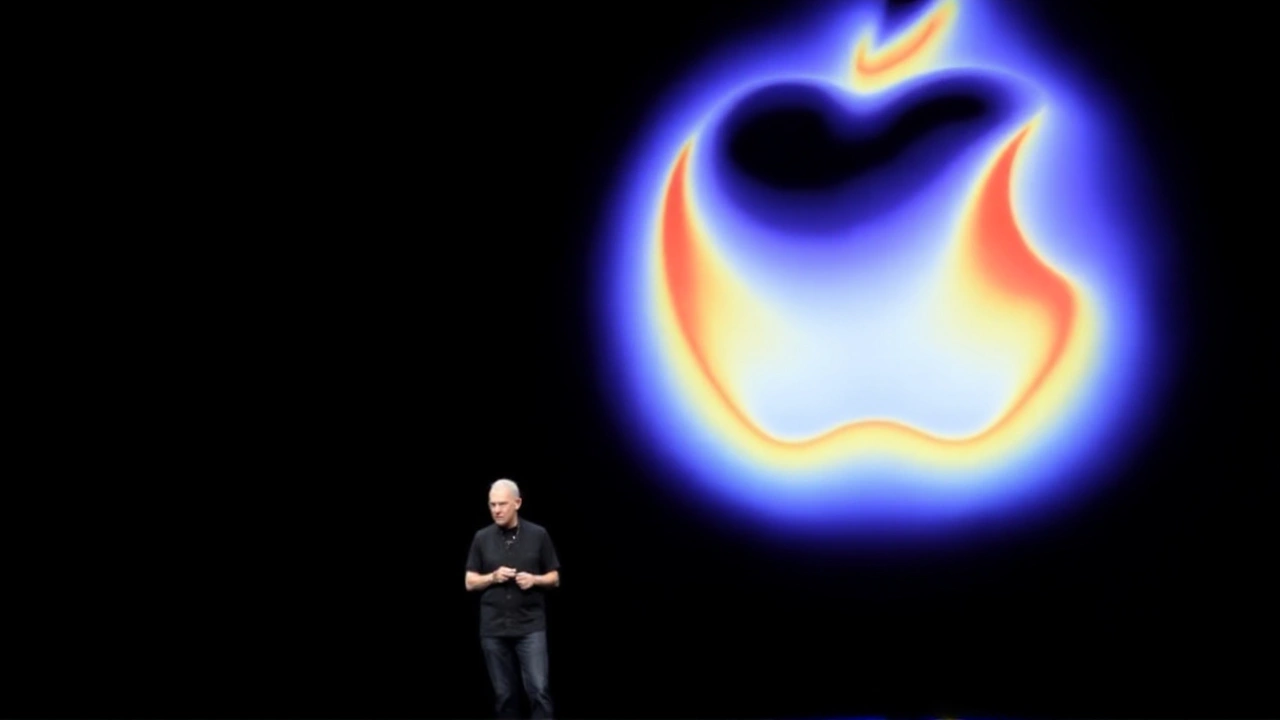iPhone 17 and iPhone Air: new chips, new cameras, new shape
Apple’s fall show at Steve Jobs Theater ran long for a reason: the company packed it with hardware. The headliners were four phones—the standard iPhone 17, the ultra-thin iPhone Air, and the more muscular iPhone 17 Pro and Pro Max—plus big refreshes to Apple Watch and AirPods. Apple framed it as a step-change year, not a routine spec bump.
The spotlight fell on the iPhone 17 Pro pair. Apple’s new A19 Pro chip sits at the center, pitched as a huge leap in performance and efficiency. That matters for everything from photo processing to demanding video capture. To keep it cool, Apple engineered a vapor chamber that’s laser-welded into a thermally conductive aluminum unibody. In plain English: stronger, lighter, and better at shedding heat, so heavy tasks can run longer without throttling.
Design-wise, Apple leaned into durability and finish. Ceramic Shield 2 now protects both the front and—first time—the back of the Pro phones. Apple claims three times better scratch resistance than before on the front cover, which should help anyone who keeps their phone and keys in the same pocket. The fit and finish looked meticulous on stage, with tight seams around the new camera array and clean antenna lines.
The camera system is where the Pro models try to pull ahead. There are three 48MP Fusion cameras—Main, Ultra Wide, and a new Telephoto—which Apple says behave like eight distinct lenses thanks to smart cropping and focal length options in the camera app. The headline number is 8x optical-quality zoom, the longest Apple has offered yet. Expect crisper framing at distance without the watercolor look that comes from pushing digital zoom too far.
The front camera also got attention: it jumps to 18MP and adds Center Stage. That means the camera can auto-reframe during video calls, keeping you in the center if you move, a trick that’s been popular on iPads and Macs. For creators, it should help with selfie vlogging and quick check-in videos without fiddling with framing.
Pro video is the big swing. Apple brought ProRes RAW and Apple Log 2 to the iPhone 17 Pro duo, extending the toolkit for serious shooters who want maximum dynamic range and flexible color grading. Genlock support is the sleeper feature—by syncing frame timing, multi-camera shoots (think music videos, documentaries, or sports) can align footage cleanly in post. That’s not a mainstream checkbox, but it’s a signal Apple is courting professional sets as much as TikTok.
Apple didn’t spend much time on the standard iPhone 17, but the message was clear: if you don’t need the pro-grade camera stack or vapor chamber, you still get the core year-over-year improvements and the familiar design language. Apple tends to let the base model absorb the best previous-gen features while the Pros push into new territory. This year fits that pattern.
The curveball is the iPhone Air. Apple is chasing extreme thinness here, marketing it as a super-light, ultra-portable iPhone that doesn’t give up daily usability. Details were deliberately light—no deep dive on the exact thickness, battery capacity, or display specs. But the pitch is straightforward: if pocket feel and a barely-there device matter to you more than pro camera gear, the Air is the intriguing new lane. The move expands Apple’s iPhone family into a clearer three-track strategy: mainstream, performance/professional, and ultra-thin.
Here’s what stood out, model by model:
- iPhone 17: Core upgrades and a familiar form factor for most buyers who don’t need pro video or heavy zoom.
- iPhone Air: The thinnest, lightest option; designed for portability-first users who want a sleek phone without extra heft.
- iPhone 17 Pro / Pro Max: New A19 Pro chip, vapor chamber cooling, 48MP triple camera system with 8x optical-quality zoom, pro video formats (ProRes RAW, Apple Log 2), genlock, and Ceramic Shield 2 on both sides.
If you’re wondering why Apple obsessed over thermals this year, it’s because sustained performance wins. High-res video, advanced photo pipelines, and longer gaming sessions all push heat. A sealed, laser-welded vapor chamber helps the phone keep its peak speeds longer, which can be the difference between a clean 4K capture and dropped frames, or between fast edits and waiting for renders.
The camera math also tracks with Apple’s recent strategy: big sensors, higher base resolutions, and computational optics. By starting with more data (48MP on three lenses), the camera app can offer multiple focal lengths without obvious quality loss. The “optical-quality” phrasing suggests Apple is blending lens optics with sensor crop zones and processing to deliver cleaner zoomed images than pure digital zoom can manage.
The pro video upgrades matter beyond specs. ProRes RAW preserves sensor data for colorists and editors, while Apple Log 2 is Apple’s new log curve aimed at squeezing more highlight headroom. Genlock—common on pro cameras—keeps multiple devices in sync so editors can cut between angles without fighting drift. For indie creators who already use iPhones as crash cams or B-cams, this lowers the friction of dropping iPhone footage into a pro timeline.
On durability, the extension of Ceramic Shield to the back is a practical win. Many “slab” phones look pristine until micro-scratches catch the light. Toughening both sides should keep the phone looking newer for longer, even in a case. It also hints at Apple trying to cut down on cosmetic wear complaints that inevitably surface a few months into ownership.
What Apple didn’t say is notable too. There’s no pricing revealed here, no battery life claims, and no exact dimensions for the Air. Apple often holds some of that for hands-on sessions and review units. Still, the story arc is clear: sharper focus on heat management, creator features, and design variety.

Apple Watch and AirPods: health, performance, and tighter ecosystem
Apple’s wearables got their own upgrades. The Apple Watch Series 11 pushes health tracking and performance, the Watch SE 3 modernizes the entry tier, and the Watch Ultra 3 keeps its rugged, big-battery identity for outdoor types. Apple didn’t dump a spec sheet on stage, but positioned the trio as a cleaner ladder: affordable, mainstream, and expedition-ready.
Series 11 is the daily watch most people will buy. Expect faster performance and enhancements to health metrics that pair with iPhone for coaching, alerts, and trends. SE 3 keeps the price-conscious buyer in the ecosystem with essentials and a modern processor, good for families and first-time Watch users. Ultra 3 remains the choice for endurance athletes and field workers—thicker case, tougher build, and features that make sense on a mountain or at sea.
On the audio side, AirPods Pro 3 promise improved sound and stronger noise cancellation. Apple didn’t enumerate drivers, microphones, or DSP changes, but the message was clear: better isolation and richer audio. ANC quality is the make-or-break feature in planes, subways, and open offices, so any noticeable jump there will be felt immediately. If Apple also refined transparency mode and call clarity, commuters and frequent flyers will notice.
All of this rolls into Apple’s broader ecosystem push. The company tied the announcements back to Apple Intelligence—its on-device and private-by-design approach to AI features that are threading across apps and services. Even without a blow-by-blow of new AI tricks, the pitch is that every new device will handle more tasks locally, respond faster, and cooperate better with other Apple gear. For most people, that shows up as smoother voice features, smarter photo handling, and tighter continuity between phone, watch, and earbuds.
Availability is clean and simple. Pre-orders for Apple Watch Series 11, Watch Ultra 3, Watch SE 3, and AirPods Pro 3 opened right after the event. iPhone pre-orders—covering the iPhone Air, iPhone 17, iPhone 17 Pro, and iPhone 17 Pro Max—start Friday, September 12 at 5:00 a.m. Pacific. Launch day for all announced devices is Friday, September 19, 2025.
Quick snapshot of who each product targets:
- Everyday users: iPhone 17 and Watch Series 11 for balanced features without pro overhead.
- Style-first minimalists: iPhone Air for a featherweight phone that disappears in a pocket or small bag.
- Creators and power users: iPhone 17 Pro/Pro Max for the A19 Pro chip, advanced cameras, and pro video formats.
- Outdoor and endurance users: Watch Ultra 3 for rugged build and long runtimes.
- Budget- and family-focused buyers: Watch SE 3 to get core features at a lower cost.
- Frequent travelers and commuters: AirPods Pro 3 for stronger noise canceling and better sound.
What we’re still waiting to learn:
- Pricing and storage tiers across the iPhone 17 family.
- Exact specs for iPhone Air, including thickness, battery capacity, and display performance.
- Battery life claims for all phones and watches under real-world workloads.
- Detailed audio hardware and ANC benchmarks for AirPods Pro 3.
Why this matters: Apple usually rotates which products get the big lift each year. This time, the Pro phones carry the technical torch—new chip, cooling, and camera stack—while the iPhone Air opens a fresh design lane. Watches and AirPods shore up the ecosystem around the phone. If you’re already in Apple’s world, the upgrades are about doing more on-device with less friction. If you’re on the fence, the split between Pro power and Air thinness gives you clearer choices.
Key dates to keep in mind:
- Now: Pre-orders for Apple Watch Series 11, Watch Ultra 3, Watch SE 3, and AirPods Pro 3.
- Fri, Sep 12, 5:00 a.m. PT: iPhone Air, iPhone 17, iPhone 17 Pro, iPhone 17 Pro Max pre-orders open.
- Fri, Sep 19, 2025: All announced devices ship and hit stores.
Bottom line on momentum: Apple is widening the iPhone family while doubling down on pro tools and thermal design. That signals a two-front push—one for creators who want a phone that can hang with pro rigs, and one for users who want a beautiful object that practically vanishes in the hand. The wearables and earbuds fill in the edges, knitting the experience together the way Apple likes to: tight, consistent, and quietly ambitious.




